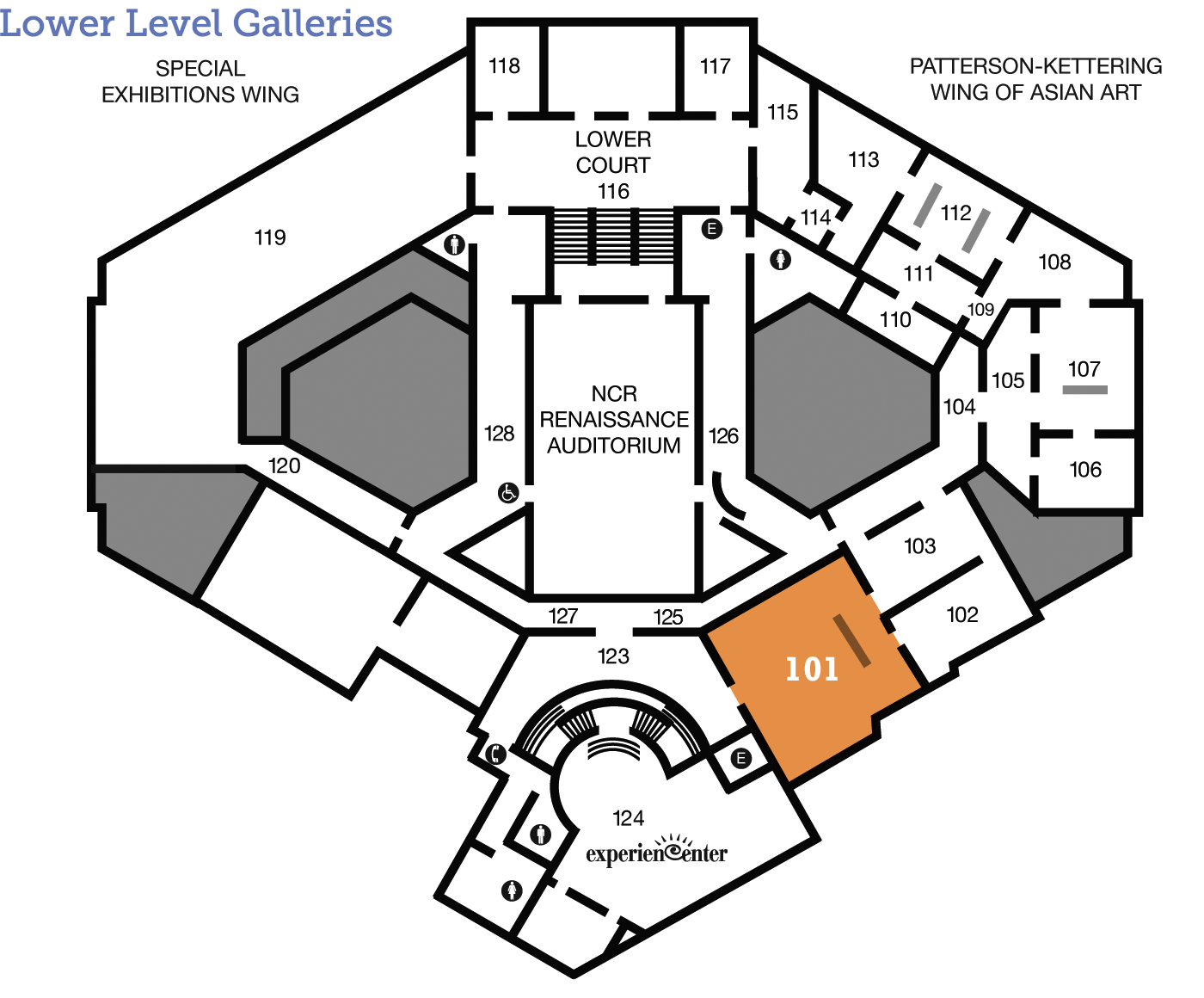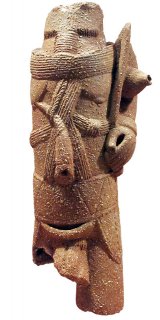
Nok
Torso of a Chief
Terra-cotta Height: 25 3/4 inches Museum purchase with funds provided by the Medici Society 2003.76
Found by Accident
While mining for tin in Nigeria some locals found strange-looking, rough-textured terracotta heads. Soon more complete pieces appeared. Where did they come from? Who made them? The people had stumbled onto 2000 year-old artifacts, the remains of the Nok culture.
A Day in the Life
Tools and Techniques
Behind the Scenes
The Dating Game
This sculpture is around 2000 years old. How do archeologists determine the dates of terracotta objects like this? One method is thermoluminescence dating, a highly specific science that must be done by qualified experts in order to ensure accuracy. How does it work? Find out more in the following video.
© Archaeosoup
Transcript:
The so-called Nok culture is one of West Africa’s earliest known civilizations. In 1943, British archaeologist Bernard Fagg came into possession of a terracotta head from the region. He employed thermoluminescence to date the head to around 500 BC, thus giving a date to what had hitherto been a fairly mysterious culture. This dating technique depends upon radiation; but don’t worry, we’re not talking about the superhero-inducing stuff, rather, normal background radiation found in the natural environment. Specifically, low levels of radiation given off by radioactive elements such as Uranium, Thorium, and also the radioactive version of Potassium. Thermoluminescent dating depends upon a reaction between this radiation, certain materials, and crystalline formations. For example, in a material such as a block of clay, background radiation will have an effect upon its atoms. Ionizing radiation has the potential to dislodge and expel electrons from atoms within the block of clay. Some of these electrons are then corked within crystalline imperfections within the block of clay, effectively imprisoning them. The number of electrons imprisoned within the clay will continue to rise through time; these can only be released by heat. More often than not, this heat comes in the form of fire, and in the case of clay usually occurs when a pot is fired in the kiln. At this moment, all of the electrons are effectively released from their crystalline prisons. Imperceptible to the human eye, they escape in the form of light. This process is termed bleaching—the prisons are emptied. And from this point onward, the concentration begins to build up once more until eventually it is excavated in the form of a broken pottery shard on an archaeological site. When a sample is taken and rapidly heated, it is possible to measure the energy, or light, emitted and thereby gain an estimate for when the pot was last exposed to heat.
Look Closer
Trying to Get a Head
Does this sculpture look like it is missing something? Originally it had a head and legs. What might the head have looked like? Select the one below that you think most likely fits The DAI’s Nok figure. When making your choice, consider how qualities such as the naturalism and geometric shapes compare to the torso.
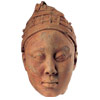
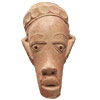
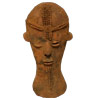
Try again!
This terracotta head was made in Nigeria by the Ife culture more than 1,000 years after The DAI’s Nok Torso of a Chief.
Africa, Southwestern Nigeria, Ife culture, Head, possibly a King, 12th–14th century, terracotta with residue of pigment and traces of mica, 10 ½ x 5 11/16 x 7 3/8 inches. Kimbell Art Museum, Fort Worth, AP 1994.04.
Correct!
This terracotta head was made by the same ancient culture that created the Nok Torso of a Chief here at The DAI.
Africa, Nigeria, Nok region, Head, 7th century BCE–3rd century CE, 15 x 7 13/16 inches. Cleveland Museum of Art, Cleveland, Andrew R. and Martha Holden Jennings Fund 1995.21.
Try again!
Although this head has strong, simple lines like the Torso of a Chief, it actually was made only 400 years ago in the area of modern-day Ghana.
Africa, Ghana, Akan peoples, Memorial Head (Nsodie), 17th–mid-18th century, terracotta, roots, quartz fragments, 8 x 5 5/8 x 5 inches. The Metropolitan Museum of Art, New York, The Michael C. Rockefeller Memorial Collection, Purchase, Nelson A. Rockefeller Gift, 1967, 1978.412.563 (artwork in the public domain; photograph provided by The Metropolitan Museum of Art, www.metmuseum.org).
Just for Kids
Imagine!
This figure was made 2000 years ago by the Nok. The Nok was an African culture from modern-day Nigeria. We do not know who this person was, but it was probably an ancestor or god.
If you could touch this sculpture, how do you think it would feel? What do you think it is made of? Do you think you have ever held something like this before? If so, what was it?
Signs & Symbols
Dig Deeper
Arts Intersected
The Sculpture Speaks
Did You Know?
Unfinished?
Look closer at the surface of this sculpture. Why is it so rough and grainy? Originally it had a smooth finish, but the slip (thinned-down clay) coating has worn off over the years. Now you see the chunky particles of gravel and bits of quartz that were mixed into the clay and gave it more structure.
And look at some of the details of the sculpture, such as the belt, the bead necklaces, the two horns, and the beard. Although we cannot be sure about the purpose of the sculpture, the various accessories indicate it was an important person, such as a chief, an ancestor, or a deity.
Expert Opinion
Africa’s Glorious Past
This statue is a symbol of a great period of African culture. The name “Nok” comes from the town where one of the first terracotta heads was discovered in 1944. It is used to refer to the people that lived in the area where these sculptures have been found, a roughly 300,000 square mile region covering parts of modern-day Nigeria and Niger. Who were the Nok and how did they make these exceptional terracotta sculptures? The DAI asked Dr. Frank Eguaroje, Professor of African Anthropology at Wright State University, about this work. Tap on the questions to learn more.
What can we tell about Nok culture from looking at this figure?
The ancient people of Nok displayed a tremendous flair and creativity in dressing and adorning their bodies. Through the use of the clay medium, this male torso is bedecked with beads. It also portrays the existence of a thriving bead making industry which catered to the aesthetic, religious and social needs of the people of the Nok culture. The use of beads was a privilege that was mostly enjoyed or monopolized by those in the upper echelons of the society. Besides their aesthetic functions, beads were and are still used as markers of hierarchies and distinction. Various categories of people, such as kings, queens, chiefs, warriors, hunters and members of social, cultic and religious organizations in Nok society, wore beads as badges for their hierarchies and distinction.
How was the terracotta fired?
The process of producing terracotta was tasking and complicated, especially considering the limited resources of 2,000 years ago. The process of firing therefore required some technological knowledge and the mastery of clay properties. Since there is no evidence of the existence of kilns at that time, it is plausible that iron-smelting ovens must have served as kilns. There is also the possibility of firing the clay objects in an open fire, a process that African potters have been using dating back to the historical past.
Why is it unique to have such an ancient piece of art from this region of Africa?
The Nok terracotta figures are archeologically, culturally, artistically and historically significant. Nok art portrays a thriving and sophisticated civilization, debunking the colonial myth that Africa had no civilization prior to the arrival of Europeans. The terracotta piece is a testament to the high art and technology of the Nok society. It was a sedentary and peaceful society whose advancement in iron technology laid the foundation for an artistic creativity that has stunned the world. It is indeed a manifestation of Africa’s glorious past, and in terms of age, quality, intricacy, complexity and preservation, it ranks only behind Egypt.

Map of Nok Culture (public domain; photograph provided by Wikimedia Commons).
Further reading: Bernard Fagg, “Nok,” The Dictionary of Art, edited by Jane Turner, volume 23 (New York: Macmillan, 1996), 179–181.
Look Around
About the Artist
Talk Back
The Test of Time
The extraordinary craftsmanship used to create this figure ensured that it endured, even if in pieces, for more than two millennia. Does durability make a work of art important?

